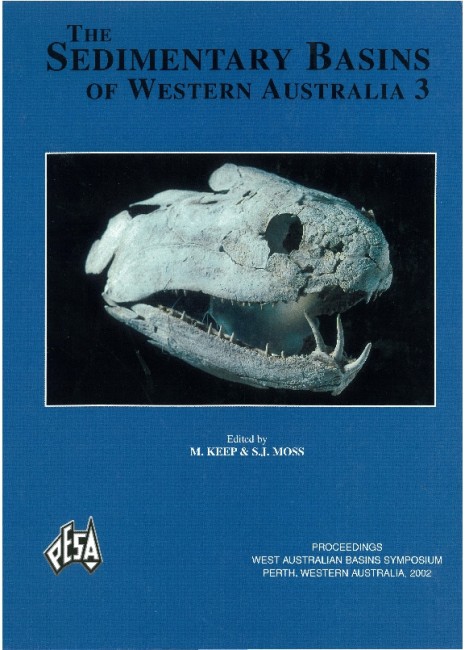Publication Name: The Sedimentary Basins of WA
Authors: M.K. Stevens, S.N. Apak, K. Grey, K.A.R. Ghori & K. Blundell
Publication Volume: 3
Date Published: December 2002
Number of Pages: 31
Reference Type: Book Section
Abstract:
Vines 1 is a vertical corehole, drilled by the Geological Survey ofWestem Australia, designed to test the petroleum potential of Neoproterowic and possibly Palaeowic strata in the Waigen area of the Officer Basin. It is located 24 km south of the Musgrave Complex and 70 km west of the South Australian border, and penetrated sandstone, mudstone, diamictite, and conglomerate of the Vines Formation {defined herein). The Vines Formation contains reworked palynomorphs that elsewhere characterise the Neoproterozoic-Cambrian boundary, without younger palynomorphs other than contaminants, and so presumably is earliest Cambrian in age. Palaeomagnetic data from drillcore oriented using the dipmeter log are consistent with an Australian palaeomagnetic pole from the time interval 610-540 Ma. The succession was probably derived by rapid uplift of the Musgrave Complex during the Petermann Ranges Orogeny, which has an age of approximately 560-520 Ma.A significant combustible gas show {30 x background) detected in the drilling mud at 1482 m depth was probably
released from fractures. Bitumen has been identified in thin sections and SEM samples of sandstones at 285 m and 285.3 m depth. Porosity is good in coarse clastic strata in the shallow section, but decreases with depth and is very poor below 1228 m. Diamictite and mudstone have excellent seal potential. The source potential of all
intersected strata is poor. Source maturity is assessed as late mature for oil generation.


